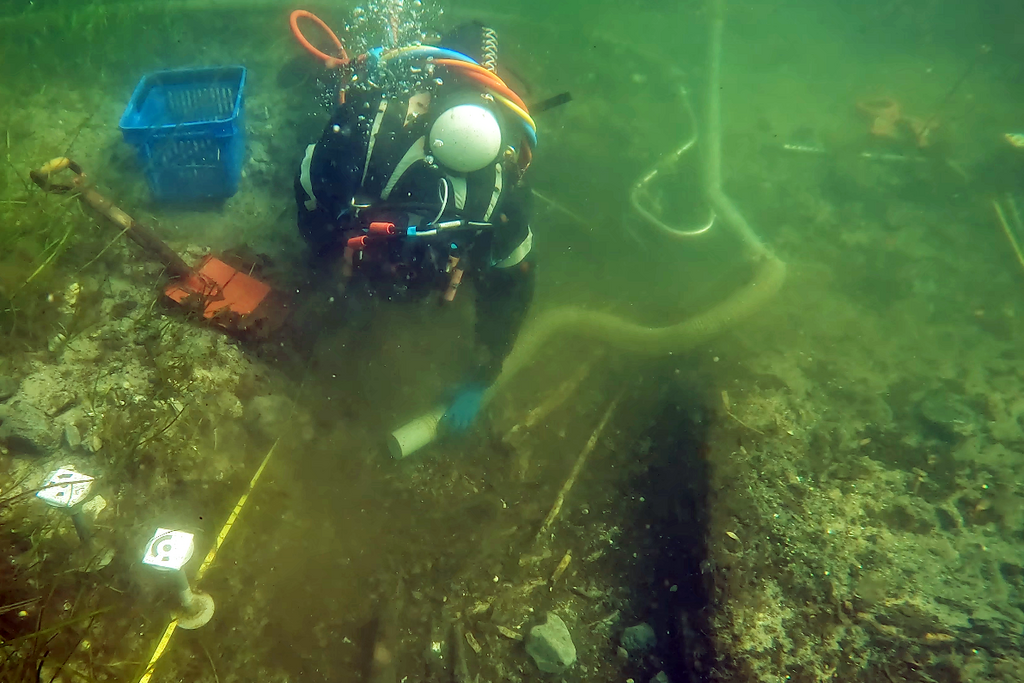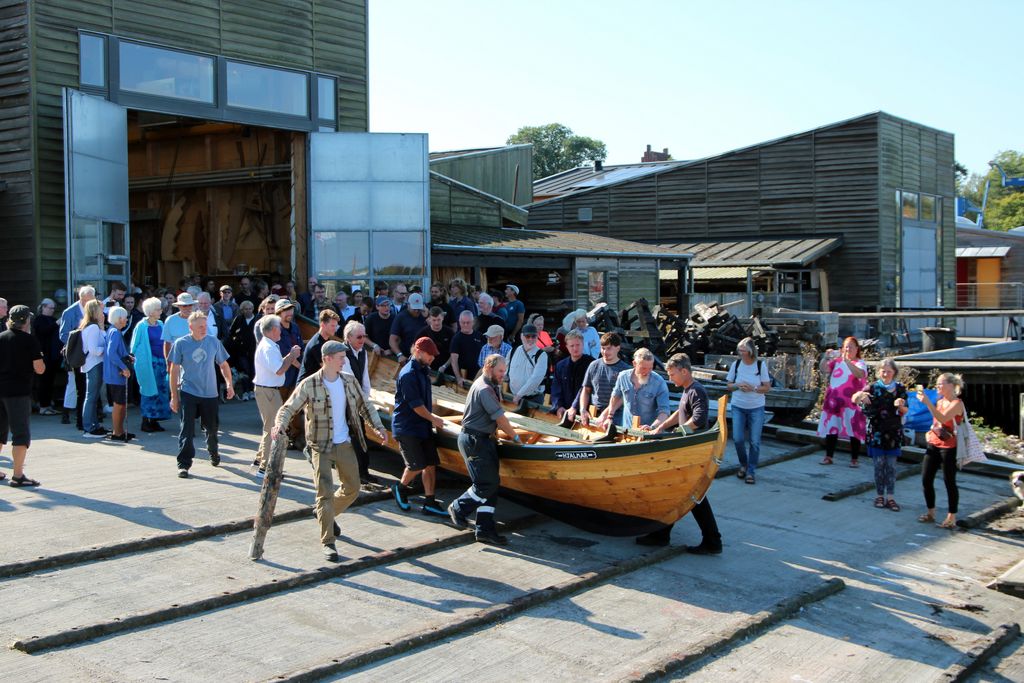Stone Age Atlantis in danger of disappearing into the sea forever
Maritime archaeologists from the Danish Viking Ship Museum in Roskilde face an urgent challenge: one of the best-preserved underwater Stone Age settlements in the world, Tudse Hage by Skelskør Fjord on the west coast of the Danish island of Zealand, is seriously threatened by erosion.
New Faroese boat built in the spirit of old master boatbuilders
The Viking Ship Museum just launched a new traditionally clinker-built Faroese rowing and sailing boat. The boat is a so-called Tíggjumannafarer, with room for ten rowers, and it will primarily be used by the museum's educational service for sailing activities with children and young people.

